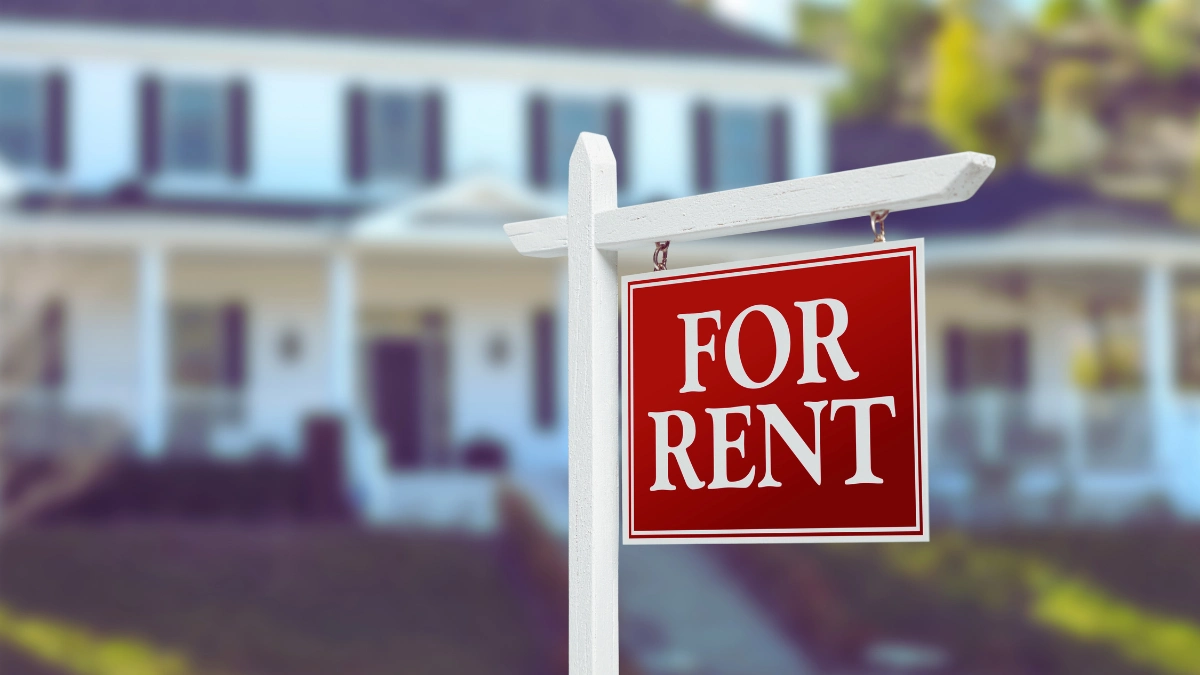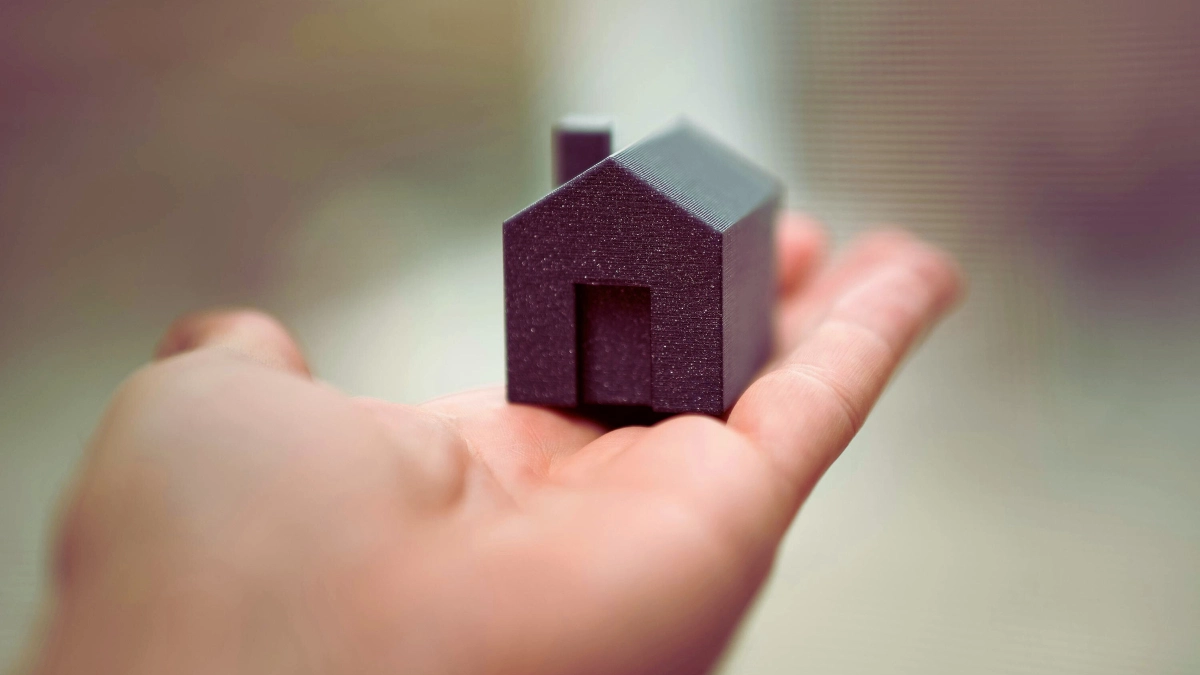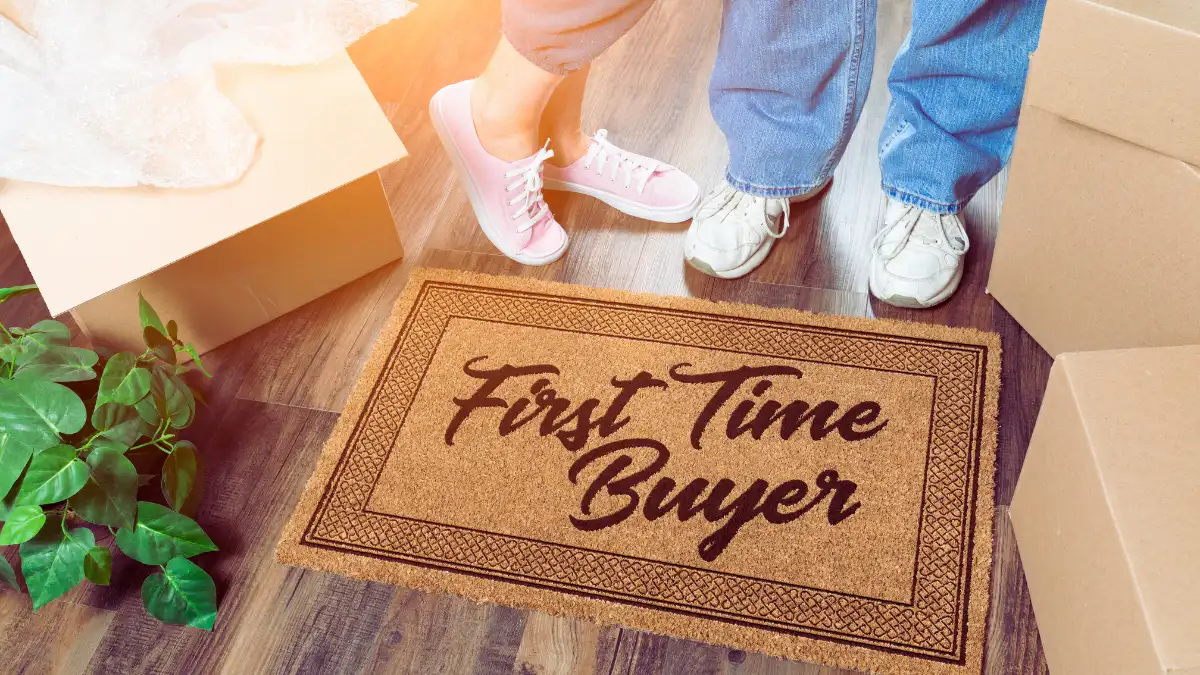You’re 35 years old. You make decent money. You’ve been saving for years.
And you still can’t afford a house.
Your parents bought their first home at 28. They paid $120,000. That same house? It’s worth $450,000 now. Your salary hasn’t tripled. But home prices have.
Here’s the brutal truth: Only 55% of millennials own homes right now. That number has remained unchanged for two years, according to Redfin’s 2025 report. Meanwhile, your baby boomer parents? 74% of them own homes.
You’re not lazy. You’re not bad with money. The game changed. And nobody told you the new rules.
This guide outlines 11 strategies that are currently effective in 2025. Not someday. Not when the market crashes. Right now.
Some of these will sound crazy. Good. The old playbook doesn’t work anymore.
The Numbers Don’t Lie: Why You’re Struggling

Let’s look at what you’re up against.
The typical first-time buyer is now 38 years old. In the 1980s? They were 29. That’s nine extra years of paying rent instead of building wealth.
Here’s what that delay costs you:
Monthly rent: $1,800 (national average)
Times 9 years: $194,400 thrown away
Plus home appreciation you missed: About $75,000
Total cost of waiting: $269,400
That’s a quarter million dollars. Gone.
According to a 2025 study by Apartment List, only 33% of millennials owned homes by age 30. Compare that to baby boomers at the same age: 48% owned homes. You’re 15 percentage points behind where your parents were.
The median home price hit $422,000 in 2024. Your monthly payment? About $2,800. That’s the highest it’s ever been.
Student loans don’t help. The average millennial carries $40,438 in student debt. Your parents? Most didn’t have any.
But here’s what nobody talks about: Homeowners have 40 times more wealth than renters. That’s from Harvard’s Joint Center for Housing Studies. This isn’t just about having a house. It’s about building wealth. About retirement. About not working until you’re 75.
22% of millennials have given up completely. They’ve stopped looking. They think it’s impossible.
Are you about to become part of that 22%? Or are you ready to try something different?
Strategy #1: Get Free Money From Programs Nobody Knows About

Over 2,000 programs will give you money for a down payment. Not to loan you money. Give it to you.
Most people have no idea these exist. That’s why more than 50% of millennials use them.
New York City offers up to $100,000 for your down payment through the HomeFirst program. Bank of America gives up to $10,000 that you never pay back. Alabama provides up to $10,000 as a zero-interest second mortgage.
Denver offers $40,000 through the Dearfield Fund for Black buyers. Twin Cities gives $50,000 as a forgivable loan that disappears if you stay five years.
There are four types: grants (free money), forgivable loans (free if you stay), deferred loans (pay when you sell), and low-interest loans.
How to Find Programs in Your Area
Here’s your step-by-step process:
- Visit DownPaymentResource.com and type in your zip code to see every program available
- Check HUD.gov for state-specific programs most people miss
- Review the requirements – most want income below the area median
- Verify your credit score – you’ll need 620-640 for most programs
- Complete the homebuyer class – usually 6-8 hours online
- Apply early in the year – January through March is best before funds run out
Apply early in the year. January through March is best. These programs run out of money by summer.
Strategy #2: Stop Trying to Save 20% Down

31% of Americans think you need 20% down to buy a house. They’re wrong.
59% of current homeowners put down less than 20%, according to LendingTree’s 2024 mortgage study. Some put down 3%. Some put down zero.
Let’s do the math on a $300,000 house:
20% down: $60,000
3.5% down (FHA): $10,500
Difference: $49,500
How long does it take to save $49,500 extra? If you save $500 a month, that’s 99 months. More than 8 years of paying rent.
FHA loans let you put down 3.5% with a 580+ credit score. You can even buy homes up to four units. On a $300,000 home, that’s $10,500 down instead of $60,000.
Conventional 97 loans need just 3% down and a 620+ credit score. The mortgage insurance drops off when you hit 80% equity.
VA loans (for veterans) require $0 down with no mortgage insurance ever. USDA loans (for rural areas) also offer $0 down.
Millennials put down a median of 8%. Not 20%. The 20% rule is old.
Your Low Down Payment Options
Compare these programs to find your best fit:
- FHA Loans: 3.5% down, 580+ credit score, works on 1-4 unit properties, mortgage insurance for the life of the loan
- Conventional 97: 3% down, 620+ credit score, PMI removable at 80% equity, often better long-term
- VA Loans: $0 down, no credit minimum, no PMI ever, for veterans and active military only
- USDA Loans: $0 down, rural areas only, income limits apply, great for suburban buyers
You’ll pay $100-200 more each month for mortgage insurance. But you get into a house years earlier. What’s worth more? Owning a home now that goes up in value? Or waiting 8 more years to avoid $150 a month in insurance?
Strategy #3: Live Rent-Free By Renting to Others

55% of millennials and 51% of Gen Z think house hacking is a smart move, according to Zillow’s 2023 homebuyer survey.
You buy a house. You rent out part of it. The rent covers your mortgage. You live free.
Craig bought a six-bedroom house in Denver for $400,000. He put down 3.5% using an FHA loan. His mortgage was $2,100 a month.
He rented two bedrooms to roommates for $1,550 and other rooms on Airbnb for $2,000. Total rent: $3,550. His profit: $1,450 a month while living free.
Another guy bought a duplex for $300,000. He lives in one unit and rents the other for $1,150. He rents a bedroom in his unit for $550. Total rent: $1,700. His mortgage: $1,550. He lives rent-free with $150 to spare.
You can buy a duplex or fourplex and live in one unit. You can rent spare bedrooms in a single-family house. You can build or buy a property with an ADU (accessory dwelling unit). Or you can Airbnb your extra space for even more money.
Banks won’t count potential rent when you apply. You need to prove you can afford the mortgage without renters. Once you close, do whatever you want.
Four House Hacking Methods That Work
Pick the approach that fits your lifestyle:
- Multi-Family Properties (Duplex/Triplex/Fourplex): Live in one unit, rent the others – best separation and easiest to manage
- Rent-by-Room: Single-family home where you rent spare bedrooms – lowest startup cost, but requires shared living
- ADU Strategy: Separate unit on property like a garage apartment – best privacy but higher initial investment
- Short-Term Rentals: Airbnb or Vrbo for vacation stays – highest income potential but most hands-on work
Don’t skip tenant screening. Check credit and call references. Don’t ignore your HOA rules because some don’t allow rentals. Budget 1% of your home’s value each year for repairs. Don’t buy in a bad area where nobody wants to rent.
Strategy #4: Get Paid Up to $15,000 to Move

Some cities are so desperate for people, they’ll pay you to move there.
Since 2019, over 5,000 remote workers have moved to new cities for cash. They’ve collected $50 million total.
Topeka, Kansas, offers up to $15,000. West Virginia gives $12,000 cash plus free outdoor activities worth $2,500. Tulsa, Oklahoma, provides $10,000 cash plus free coworking. Jackson, Michigan, offers up to $25,000 for down payment help.
Newton, Iowa, gives $10,000 if you buy a house over $240,000. Arkansas cities provide up to $18,100 in combined incentives. Alaska pays about $1,300 per year just for living there.
The requirements are simple. Be 18 or older. Work remotely. Move within 6-12 months. Stay for at least 1-2 years. Prove you have a job and income.
Let’s say you want to buy a $250,000 house in Topeka. You need $8,750 down (3.5%). Topeka gives you $15,000. You just bought a house with $6,250 left over for closing costs.
68% of full-time workers think they’d be better off in a different city.
Top Relocation Programs Offering Cash
These cities want you badly enough to pay:
- Topeka, Kansas: Up to $15,000 for professionals relocating
- West Virginia (Ascend WV): $12,000 cash + $2,500 in outdoor activities
- Tulsa, Oklahoma: $10,000 + free coworking space and community events
- Jackson, Michigan: Up to $25,000 in down payment assistance
- Arkansas Communities: Up to $18,100 combining cash and perks
- Alaska: $1,300 annually through Permanent Fund Dividend + no state income tax
Visit MakeMyMove.com to browse programs and apply.
Strategy #5: Split the Cost With Someone Else

54% of millennials get help buying their first home, according to LendingTree’s 2024 down payment study. 27% get help from their parents. Others go in with friends, siblings, or partners.
Two friends want to buy a $300,000 house. Solo, each needs $10,500 down. Together, they each contribute $5,250. The monthly mortgage of $2,100 splits to $1,050 each.
You can own as tenants in common (each owns a percentage), joint tenancy (both own 50/50), or through an LLC (create a company that owns the house).
Your agreement must include who owns what percentage, who pays what each month, how you split repairs, what happens if someone wants out, what happens if someone stops paying, who gets first dibs to buy the other out, and how you decide on big changes.
Pay a lawyer $500-1,000 to draft it properly. It’s cheaper than litigation later.
Two siblings bought a duplex for $280,000. Brother lives in one unit. Sister lives in the other. They split the mortgage 50/50. After three years, my brother wants to move. Sister buys his half and now owns the whole building.
What Your Co-Ownership Agreement Needs
Protect everyone with these essential elements:
- Ownership percentages clearly stated (50/50, 60/40, etc.)
- Monthly payment breakdown for mortgage, taxes, insurance, and utilities
- Maintenance decision process and cost-splitting rules
- Exit strategy if one person wants to sell or move
- Right of first refusal gives the existing owner the first chance to buy out
- Default provisions covering what happens if someone stops paying
- Improvement rules for handling renovations and value-add projects
Strategy #6: Fix Your Credit Score Fast

Every 20 points on your credit score saves you about $50-100 per month on your mortgage.
On a $300,000 loan with a 620 credit score, you pay 7.5% interest for $2,098 per month. With a 720 credit score, you pay 6.5% interest for $1,896 per month. That’s $202 per month in savings. Over 30 years, that’s $72,720.
You need at least 620-640 for most programs. Get to 680 or higher for the best rates. You can improve your score by 50-100 points in 6-12 months.
Go to AnnualCreditReport.com and get your reports from all three bureaus. Look for wrong accounts, paid-off debts still showing as open, wrong balances, and identity theft. Dispute errors online.
Pay down credit cards below 30% of your limit. If your limit is $10,000, get the balance under $3,000. Set up automatic payments for everything. One missed payment drops your score 100 points.
Ask a parent or spouse to add you as an authorized user on their oldest, best credit card. You get their perfect history added to yours. Don’t close old cards. Ask for credit limit increases on cards you have.
90-Day Credit Improvement Plan
Follow this timeline to boost your score quickly:
- Month 1: Pull free credit reports, dispute all errors, pay cards below 30% utilization, and set up auto-payments
- Month 2: Pay cards below 10% if possible, become an authorized user on a family member’s card, and request credit limit increases
- Month 3: Maintain perfect payment history, re-check score to measure progress, apply for mortgage pre-approval
Keep a perfect payment history for 90 days and check your score again.
Strategy #7: Attack Student Loans the Smart Way

Average millennial student debt is $40,438. That’s a car payment every month for 10-20 years.
Student loans don’t stop you from buying a house. But the monthly payment might. Banks look at your debt-to-income ratio. Most programs want this under 45%.
If your income is $5,000 per month, your max debt allowed is $2,250. If your student loan payment is $400 and your car payment is $350, you have $1,500 left for your mortgage. If your student loan payment were $250 instead, you’d have $1,650 for a mortgage.
You have three options. Pay them off aggressively for 2-3 years if you owe less than $30,000.
Refinance to a longer term so your payment drops and your DTI improves. Or switch to income-driven repayment, where your payment gets tied to your income instead of your balance.
Paying off gives you a lower debt-to-income ratio and better interest rates, but delays buying 2-3 years.
Refinancing improves DTI immediately without delaying, but you pay more interest over time. Income-driven repayment gives much lower monthly payments and improves DTI significantly, but only works for federal loans.
Three Approaches to Student Debt When Buying
Choose based on your timeline and loan amount:
- Aggressive Payoff: Best if you owe under $30,000 – delay buying 2-3 years, but eliminate debt completely
- Strategic Refinancing: Extend the loan term to lower the monthly payment – improves DTI immediately, allows you to buy now
- Income-Driven Repayment: Federal loans only – payment based on income, not balance, dramatically lowers DTI
Pick the option that fits your timeline. Want to buy now? Refinance or switch to income-driven. Okay waiting? Pay them off.
Strategy #8: Buy Smaller Than You Think You Need

The median millennial home is 2,000 square feet. Do you really need that much?
A 1,200 square foot condo costs $250,000. A 2,000 square foot single-family home costs $400,000. That’s a $150,000 difference.
The monthly payment on the condo is $1,650. The monthly payment on the house is $2,650. Add utilities, HOA, and maintenance.
Total monthly condo cost is $2,050. Total monthly house cost is $3,250. That’s a $1,200 per month difference. Over 30 years, that’s $432,000.
Condos are the lowest priced, with someone else handling exterior repairs. You pay HOA fees of $200-400 per month, and they appreciate it more slowly. Townhomes are middle-ground priced with less maintenance than single-family homes.
You still usually have an HOA. Single-family homes give you the most control and best appreciation, but they’re the most expensive, with all maintenance on you.
A Denver buyer started looking for single-family homes at $400,000. Couldn’t afford any. Switched to townhomes and condos at $300,000. Found one within a month.
Don’t let ego pick your house. Let math pick it.
Comparing Your Property Type Options
Understand the trade-offs before you choose:
- Condos: Lowest entry cost, exterior maintenance included, $200-400/month HOA fees, slower appreciation
- Townhomes: Middle-ground pricing, less maintenance than single-family, usually have an HOA, better appreciation than condos
- Single-Family Homes: Highest cost, complete control, all maintenance responsibility, best long-term appreciation
Look for neighborhoods that are about to get hot. Signs include new coffee shops opening, young people moving in, old buildings getting renovated, and still affordable prices. Buy there before everyone else figures it out.
Strategy #9: Automate Your Savings So It Actually Happens

24% of millennials think they’ll never save enough for a down payment. They’re wrong. But only if they automate it.
Manual saving fails because you see the money and spend it. Automation removes choice.
Open a high-yield savings account that pays 4-5% interest. Set up an automatic transfer of $500 per month the day after payday. Start a side hustle that adds $200-400 per month. Put every dollar from the side hustle into savings.
In year one, save $10,000 total. That’s $500 per month automated ($6,000), $300 per month side hustle ($3,600), and $400 in interest.
In year two, increase automated savings by 10% to $550 per month. Scale your side hustle to $500 per month. Bank every raise, bonus, and tax refund. Save $15,000 more for a total of $25,000.
In year three, max out your savings rate. Apply for down payment assistance programs to get $10,000-20,000 added.
Get pre-approved for a mortgage. Your total after three years is $35,000-40,000 from your savings plus $10,000-20,000 from programs. That’s $45,000-60,000 total.
Your 3-Year Savings Timeline
Here’s exactly how to save enough for a down payment:
- Year 1: Automate $500/month, start side hustle earning $300/month, cut major expenses – Goal: $10,000
- Year 2: Increase to $550/month automated, scale hustle to $500/month, bank all raises and bonuses – Goal: $15,000 more ($25,000 total)
- Year 3: Maximize savings rate, apply for DPA programs, get pre-approved – Goal: $35,000-40,000 your savings + $10,000-20,000 assistance
That’s enough for 3.5% down on a $400,000 house with money left for closing costs.
Strategy #10: Use Every First-Time Buyer Benefit

Anyone who hasn’t owned a home in the past 3 years counts as a first-time buyer.
You can pull $10,000 from your IRA without the early withdrawal penalty. Both you and your spouse can do this for $20,000 total. You must use it within 120 days to buy a home.
You can deduct mortgage interest on your taxes. On a $300,000 loan at 7%, that’s about $21,000 in interest the first year. Deducting it could save you $3,000-5,000 on taxes.
Some states offer Mortgage Credit Certificates that give you a tax credit for 20-30% of your mortgage interest every year. If you pay $12,000 in mortgage interest and your MCC is 20%, you get a $2,400 tax credit every single year.
Some cities reduce or eliminate property taxes for first-time buyers for 5-10 years. Chicago cuts property taxes by $1,000-3,000 per year for new buyers in certain areas.
Some cities waive the transfer tax for first-time buyers. That’s 1-2% of the purchase price. On a $300,000 house, you save $3,000-6,000.
Stack These Benefits for Maximum Impact
Don’t use just one – combine them all:
- IRA Withdrawal: Pull $10,000 penalty-free (both spouses = $20,000)
- Mortgage Interest Deduction: Save $3,000-5,000 on first-year taxes
- Mortgage Credit Certificate: Get $2,400/year tax credit (check state housing agency)
- Property Tax Abatement: Save $1,000-3,000/year for 5-10 years in qualifying areas
- Transfer Tax Waiver: Save $3,000-6,000 one-time at closing
Don’t just use one benefit. Use all of them. Pull $10,000 from your IRA, get $15,000 from down payment assistance, save $2,400 per year with an MCC, save $2,000 per year with property tax abatement, and save $4,500 with a transfer tax waiver. Total first-year benefit is $33,900.
You only get these benefits once. Don’t waste them.
Strategy #11: Buy Now, Refinance Later (Stop Waiting for Perfect)

Here’s what Redfin’s chief economist said in 2025: “It’s likely going to be just as difficult to buy next year as it is this year.”
Stop waiting.
If you wait three years while renting for $1,800 per month, you spend $64,800 in rent that’s gone forever.
Meanwhile, the $300,000 house you want is now $330,000-350,000 because homes appreciate 3-5% per year. Total cost of waiting is $94,800-114,800.
If you buy the $300,000 house today at 7% interest, after three years, you’ve paid down $15,000 of principal, and the house is worth $330,000-350,000.
Your equity is $45,000-65,000. If rates drop to 6%, you refinance. You keep all the equity you built.
Buy when you’re ready, not when rates are perfect. Refinancing costs $2,000-5,000, but if rates drop even 1%, you save $200+ per month.
If your credit score is 620 or higher, you have an emergency fund covering 3 to 6 months of living expenses, your job is stable, you intend to remain in the home for at least 5 years, and you can comfortably afford the mortgage payments, then buying a home is a reasonable choice.
Wait, if your credit score is below 580, you have no emergency fund, your job is shaky, you might relocate soon, or you can’t afford the payment.
Winter is better than summer for buying. December through February has 25-30% less competition, sellers are more motivated, and you can negotiate harder on price. May through August have bidding wars and houses going for over asking.
When to Buy vs. When to Wait
Make the smart decision for your situation:
- Buy Now If: Credit score 620+, have 3-6 months emergency fund, stable job, planning to stay 5+ years, can afford payment
- Wait if: Credit below 580, no emergency savings, job uncertainty, might relocate soon, payment stretches your budget
- Best Timing: December-February for 25-30% less competition and motivated sellers
The median first-time buyer is 38 now. If you buy at 38, you’re paying the mortgage until you’re 68. Every year you wait, you’re working one more year to pay off that house.
